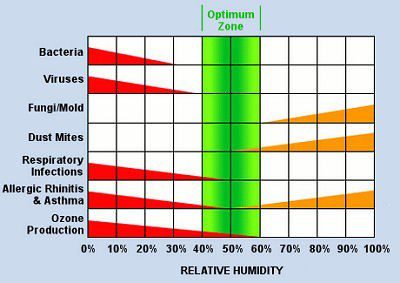
Written by Rhys Brenton, Building Biologist
It’s no surprise that there are many things in this crazy world that are not good for our health – mentally, physically or emotionally. Being unaware, or complacent of your own well-being and of the influences that exist in our daily environment, can lead to on-going symptoms that you may consider to be “normal”.
These symptoms can be as small as a skin rash or mood swings, or more serious like allergies, asthma & respiratory disorders, fibromyalgia and chronic fatigue, brain fog and migraines, or much worse. And they may stem from long or short-term exposures to pollutants that we either put into, or onto our bodies, or pollutants which come from our environment.
Sources of environmental pollutants can include, air quality, water quality, EMR & EMF exposure or the personal care and cleaning products that we used daily. Navigating and understanding all of these to arrive at a solution which bolsters a healthy lifestyle is no easy task and can unfortunately be thwart with green-washing, mis-information and mis-guidance.
The places where we spend the most significant amounts of time, like work, at home and where we sleep, can play a significant role in our health. And since we generally spend most of our time indoors, maintaining a healthy indoor environment can play a key role in your overall well-being.
Through this article and ones to follow, I want to cover some basics for each subject, bring some of the common symptoms into your awareness and provide you with some simple solutions to help you make better choices, so read on.
-
Air Quality – Mould
-
Air Quality – VOC’s & Formaldehyde
-
Air Quality – Personal Care & Cleaning Products
-
Air Quality – Wider Environmental Pollutants
-
EMF & EMR
-
Water Quality
Air Quality – Mould
It’s a HUGE subject that covers many areas of the building and the surrounding environment. It really starts with the materials used within a building’s construction and the finishes and furnishings that we fill them with, but it also depends on building design, ventilation and moisture controls in and around the building and its landscaping, as well as its history of water damage events.
The two elements we can control to keep mould out of our lives are moisture and some of its food sources. This boils down to the following:
• Landscape drainage – Ensure all ground surface water and subterranean drainage is maintained to flow away from the building envelope. If water is pooling somewhere or if you have a moist crawlspace under the building, it would be no surprise that you have mould problems.
• Vegetation – If it’s too close to the building it can impair natural ventilation, which aids in evaporation. Keep a good clearance of vegetation away from a building, especially where it restricts ventilation into crawlspaces.
• Building & plumbing integrity – Maintaining a home so to prevent water loss events is super important. If you do suffer a leak in your roof, or water ingress through a window from a storm, or leaking plumbing, it is imperative that the area is dried within 48hrs. In fact, within 24hrs is preferable. After this time, microbial growth is imminent.
• Internal climate controls – Depending on your climate zone, controlling your internal climate can be really important. In fact, there is an optimal humidity range where many sources of illness can be mitigated, not just mould. As you can see in the chart below, bacterial, viruses, fungi, mites, ozone, respiratory and allergenic sources and illnesses are mitigated within the 40-60% relative humidity range.

(Sourced from: https://www.energyvanguard.com/blog/24336/The-4-Factors-of-Comfort, November 2018)
It is not that we must live within a bubble, or at least not all of us, but closing up your home and running a dehumidifier during periods of high rainfall or high humidity can make a significant difference in abating mould growth, provided you stay on top of it.
• Housekeeping practices – Who enjoys housekeeping? …I know, neither do I, but unfortunately it is really crucial in staying on top of one of the most common food sources for mould, as well as reducing one of the most common sources of allergens within a home – Dust!
Dust is simply not “just dust”, but a concoction of contaminants, even from eras gone by. It can include contaminants like pollens, dust mites and their excrement, pet dander, heavy metals, mould spores and fragments, pesticides and the list goes on.
In older buildings, these pollutants can even include lead, asbestos, DDT, pesticides, herbicides and whatever else that has been used in the surrounding environment during those eras that are now banned !
Carrying out a thorough deep clean of ceiling cavities and giving your home a good spring clean inside and outside every 6 months is what I recommend. HEPA rated vacuums and quality microfiber cloths with non-toxic products are your best friends. And, dear I say, living with minimal clutter and arranging your home so that the task of cleaning and maintaining is not only easier but less of a drama and burden, could not be recommended highly enough!
SYMPTOMS
So, what sort of symptoms could you suffer from mould exposure?
Following is a list of just some of the symptoms that can be experienced from mould exposure (sourced from: www.survivingmold.com & https://survivingtoxicmold.com). If you suffer from any of these, it is highly recommended that seek help from a physician with an understanding of mould illnesses and to also have your home or work environment assessed to identify and rectify the root cause of your illness.
-
Blurred vision
-
Fatigue
-
Repetitive colds & flues
-
Asthma symptoms
-
Mood swings
-
Depression
-
Poor blood circulation
-
Skin rashes
-
Joint aches & pains
-
Yeast infections
-
Allergy symptoms
-
Arthritic pains
-
Immune disorders
-
Brain & Nervous system disorders
-
Balance and coordination dysfunction
-
Brain fog & Cognitive impairment
-
Dizziness
-
Headaches & Migraines
-
Memory disturbances
-
Vertigo
-
Tinnitus
Is the environment you live or work in affecting your health?
An environment that considers all aspects of pollution and supportive, healthy attributes, is imperative for the overall health of it’s occupants and for the prosperity of a commercial premises. Reduce the risk of potential health hazards and have an assessment done today!
Conscious Environments specialize in Building Inspections that expose a Buildings Health, and carry out assessments on everything from Air Quality Analysis & Testing, Mould Assessments & Sampling, Water Quality Analysis, Testing and Filter Recommendations, Dust and other Toxics / Allergens, Building Design Consultation and Building Material Choices, Location and Landscaping, Electromagnetic Field Testing (EMF) and Electromagnetic Radiation Testing (EMR). Visit www.consciousenvironments.com.au for more information.
If you are experiencing any of the symptoms listed above, book a consultation with Reine DuBois, one of the senior functional medicine practitioners at The Health Lodge. Reine works closely with her team of Integrative Doctors and complementary health practitioners to help patients with mould related issues, environmental sensitivities and Chronic Inflammatory Response Syndrome (CIRS).


